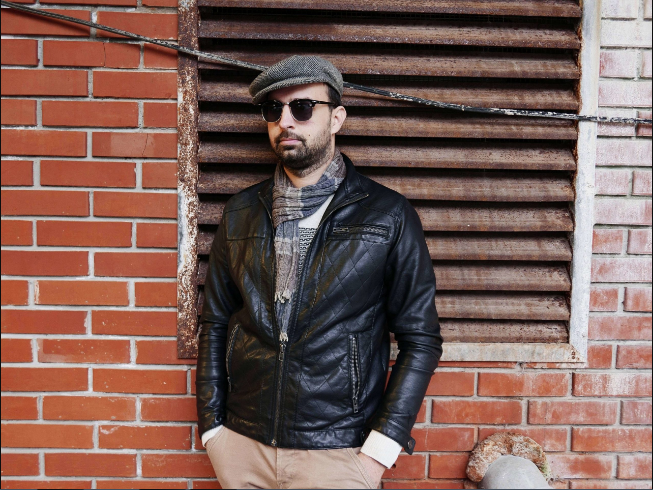Car Wrap vs Car Paint: Making the Right Choice for Your Vehicle

Two common choices that come to mind for preserving and personalizing the surface of your car are car painting and car wrapping. Before investing in your vehicle, carefully consider the distinct concerns associated with car wrapping and painting. By understanding the exact meanings, differences, cost rating, durabilities, customizations, and many other notions, this blog will examine both sides of the Car Wrap vs. Car Paint argument so that one can choose wisely, keeping the best strategies in mind.
What is a Car Wrap?
A car wrap places a thin, self-adhesive vinyl wrap on the outside of a vehicle, adding protection and customization without altering the original paint job. Car wraps offer countless design options, including solid, metallic, pearl, and multiple colors. In addition to this, there are other opinions like different logos, graphics, patterns, textures, and various finishes.
Typically, the car wrappings are constructed of vinyl. These wraps are easily detachable without affecting the original paint and offer protection against UV radiation, scratches, fading, and minor abrasions for an average lifespan of 5-7 years. Car wraps, which come in full, partial, and paint protection film (PPF) versions, are a popular alternative for vehicle owners looking for a stylish, non-permanent solution since they provide customization, protection, ease of maintenance, and cost-effectiveness.
What is a Car Paint?
The application of car paint to a vehicle’s exterior involves the use of a liquid coating comprising three distinct layers: a primer (surface preparation and adhesion), basecoat (color), and clearcoat (transparent protective coating), resulting in a glossy, long-lasting finish. It is available in acrylic enamel, urethane, polyurethane, ceramic, and waterborne varieties.
With choices for customization, automotive paint improves the look, preserves surfaces, and boosts resale value while providing durability, gloss retention, chemical resistance, and UV protection. For car owners looking for a long-lasting, premium finish, it is a substantial expenditure, but it also comes with risks of paint damage, needs time to apply, and is labor-intensive.
Comparison between Car Wrap vs Car Paint
There are differences between Car wrapping and paint when protecting and personalizing your car. While paint offers a long-lasting finish that increases durability but requires more commitment and may provide maintenance difficulties, wraps offer a flexible, temporary solution that is simple to remove.
1. Durability and Longevity
Depending on maintenance, driving habits, and climatic factors, multiple pointers come under Paint vs. Wrap. A car wrap can last anywhere from five to seven years. Weather patterns, exposure to UV radiation, and severe temperatures are some of the factors that affect durability.
Wraps that are kept up in milder regions tend to survive longer, while those that are exposed to severe weather may deteriorate more quickly. On the other hand, automotive paint can endure up to 20 years or longer with the proper care, but over time, fading, peeling, and scratches can cause the finish to deteriorate. Paint provides protection that lasts longer, but wraps make upgrading and replacement easier. Some considerable points that are to be considered are:
- Car wrap lifespan: 2 to 3 years and Paint lifespan: Up to 10 years with proper care.
- Factors affecting wrap durability: Weather, UV radiation, temperature.
- Regular inspections and Using high-quality can extend the wrap lifespan.
- Climate-controlled storage can help preserve paint finish.
2. Maintenance and Upkeep
A car wrap needs to be gently cleaned with mild soap; strong chemicals, abrasive materials, and high-pressure washing should be avoided. On the other hand, to keep painted cars looking good, it is necessary to get frequent touch-ups, polishing, and waxing. Exposure to UV radiation and environmental elements can compromise painted surfaces, emphasizing the need for diligent protection.
In stark contrast, car wraps boast hassle-free upkeep, with infrequent waxing and polishing needs and effortless repairability for minor scrapes. Factors to know about Car wrapping vs. paint include that while painted cars may need more regular and expensive repairs, wrap maintenance is generally less costly.
- The upkeep of wraps involved avoiding harsh chemicals and cleaning them gently.
- Regular touch-ups, polishing, and waxing are indicative of paint maintenance.
- Frequent waxing keeps water stains off the paint.
- Paint color is preserved by avoiding direct sunlight.
3. Customization and Flexibility
Wrap vs. Paint personalization possibilities are provided when the demands are aligned accordingly. By car wraps, which let owners quickly alter patterns, colors, and designs. Because they can be taken off without harming the underlying paint, wraps are a desirable alternative for cars that are rented or leased.
Wraps can also be changed or altered to accommodate evolving personal preferences or branding requirements. Car paint modification, on the other hand, is more difficult to modify and more permanent. For individuals who like flexibility, repainting their automobile is a less realistic option due to its high cost and duration. Owners of wraps can try out various patterns and styles without committing for a long time, offering countless options for branding and customization.
- Wrap customization offers easy design changes and is removable.
- Paint customization: More permanent and complex to change.
- Wrap benefits: Flexible, non-damaging removal.
- Custom graphics enhance brand recognition.
Cost Comparison
It’s common knowledge that car wrapping vs. paint often leans towards wrapping being the more economical option. Typical costs for wrapping can vary from 10k to 1Lac based on the vehicle’s size, level of design complexity, and wrap quality. Repainting an automobile can cost anywhere from 1Lac to 2 lac or more, depending on the type of paint, number of coats, and finish quality. Moreover, repainting usually requires disassembling and reassembling outside components, adding to labor costs.
Over time, wrapping is more economical than repainting. Covered vehicles require less maintenance and typically last between 2 and 3 years. On the other hand, repainted cars may require more frequent touch-ups and coatings, increasing the total cost of maintenance. Furthermore, wraps reduce the expense of repairs by providing protection against minor dings and fading. Conversely, repainted surfaces are more prone to deterioration and may require costly upkeep to maintain their aesthetic.
Even if the initial expenses might appear similar, the wrap vs. paint dilemma often reveals that wrapping offers considerable long-term savings and flexibility, making it a desirable choice for vehicle owners looking for a low-maintenance, personalized appearance.
End Words
In conclusion, consider factors like cost, durability, upkeep, and customization when choosing between car paint and car wraps. Car wraps are perfect for temporary ownership because they are flexible, low-maintenance, and reasonably priced. Long-term protection is offered by car paint, although it does require extra upkeep and money. Analyzing the options and making an informed decision is a must.
Ultimately, car paint suits people who value longevity and a high-quality finish, whereas car wraps are ideal for those looking for a fashionable, temporary option. Utilize UltrashieldX’s experience to make a knowledgeable choice and shield the paintwork of your car.
Copyright url- https://www.ultrashieldx.com/paint-protection-film





